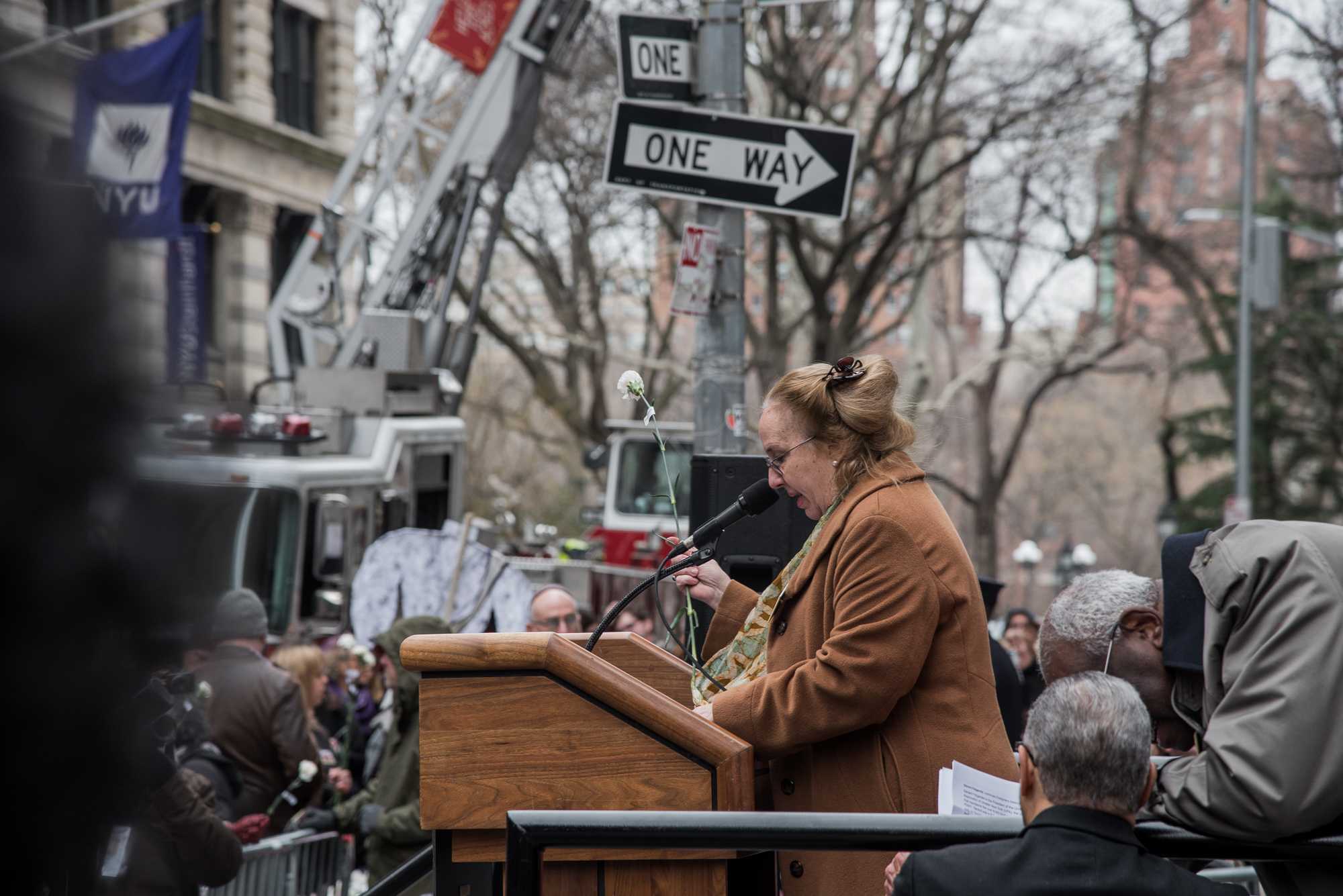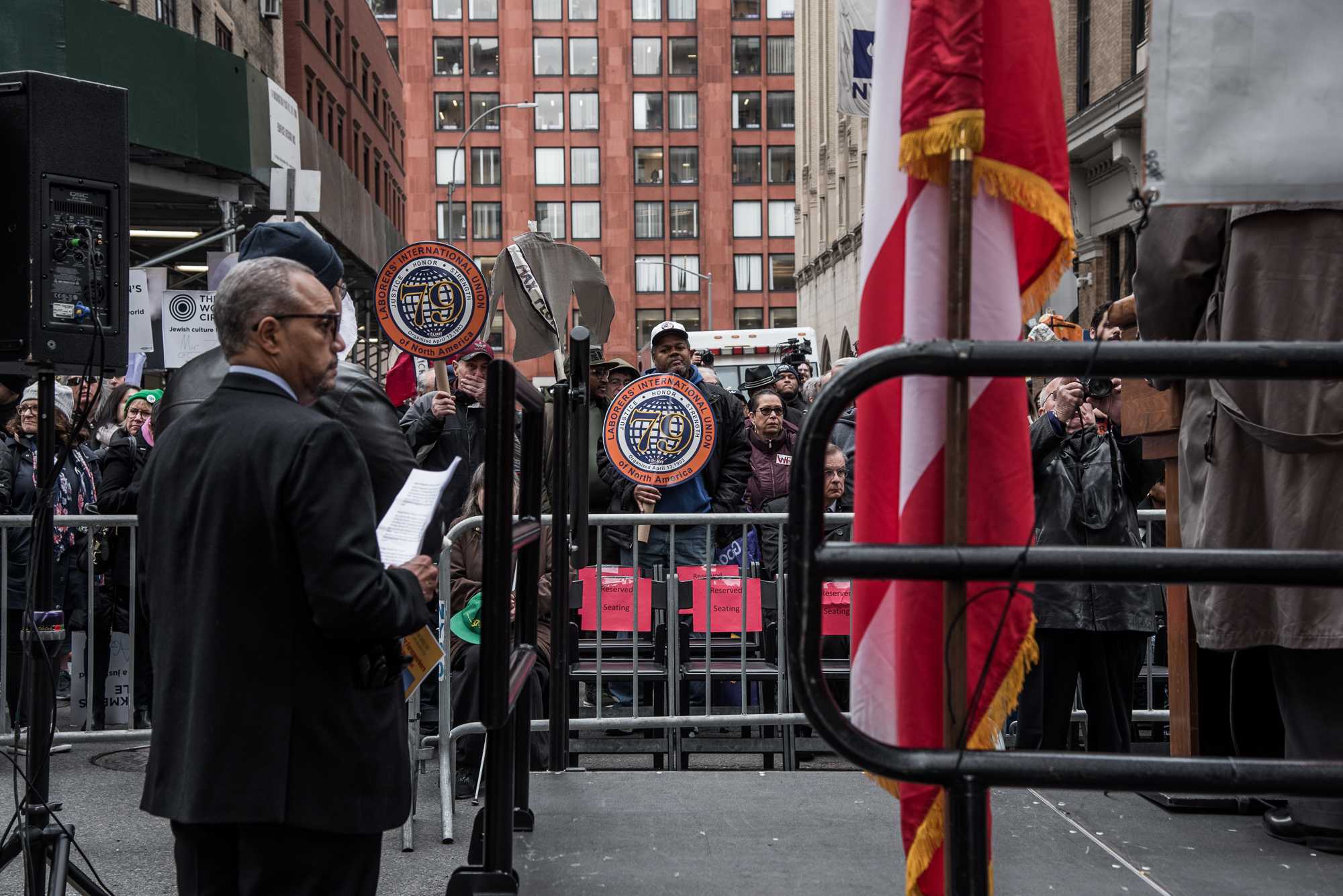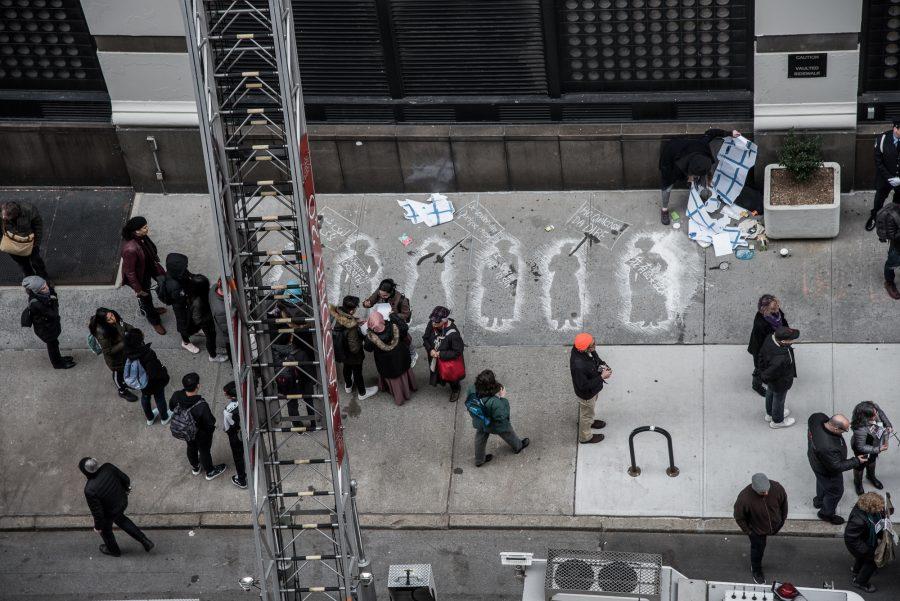Around 300 people gathered to commemorate the Triangle Shirtwaist Factory fire’s 108th anniversary at NYU’s Brown Building on Monday. Labor groups spoke out about workers’ rights in honor of the tragedy, which resulted in 146 deaths largely due to poor working conditions.
A sea of paper shirtwaists hung suspended from hand-held poles over the crowd while speakers — one of whom was Manhattan Borough President Gale Brewer — took to the small stage. At the end of each speech, the names of some of the victims were read off to the chime of a bell, which continued until all 146 victims’ names had been spoken.

(Photo by Sam Klein)
Suzanne Pred Bass is a member of the executive board of the Remember the Triangle Fire Coalition and a descendant of Rosie and Katie Weiner, who were both in the fire. Katie made it out alive while Rosie did not.
“Unfortunately, what happened in the time of the Triangle Shirtwaist fire is still happening today,” Bass said. “Workers are still in unsafe conditions. We still have a lot of work to do and that’s why this memorial is so important.”
Many of the victims of the fire were young, female immigrants from Russia, Austria or Italy. The factory workers had been locked inside their factory by management to ensure they continued working, and when fire escapes collapsed, workers were left with no way to escape the building. Many of the victims ended up jumping from the ninth floor of what is now the Brown building, which is where the Coalition crowd rallied. The fire called attention to workers’ rights issues and brought a slew of safety regulations in its wake. On Monday, members of the RTFC asked not only for remembrance but also a continued focus on advocating for workers’ rights both in the United States and abroad.
The RTFC began plans for a permanent memorial to the Triangle fire on the Brown Building after the centennial in 2011. Two years after, they hosted a design competition and selected a collaborative design by architects Richard Joon Yoo and Uri Wegman. The design entails an engraving at the base of the building describing the fire and the names of the victims and will be placed in a space owned by NYU that the university has allocated for them, according to one of the speakers. Governor Andrew Cuomo has allocated $1.5 million as part of a state grant for the memorial, which features a metal ribbon stretching from the base up to the ninth floor, where many of the victims died. The Coalition plans for the memorial to be in place by March of next year.

(Photo by Sam Klein)
Lynne E. Shannon attended the event Monday and expressed support for conscientious buying.
“It’s voting with our dollars,” Shannon said. “[We need to] try not to buy things that are unjustly made because it isn’t necessary there are too many other ways of doing it.”
Kimberly Schiller is an eighth-grade teacher in Long Island who began bringing her students to the site of the fire after the centennial in 2011. She emphasized the importance of passing the memory of the Triangle fire on to her students.
“They’re fascinated and horrified at the same time,” Schiller said. “They don’t understand how this could happen because they’re so far removed from it.”
The Coalition hopes that by remembering the fire they can inspire people to continue to fight for workers’ rights issues both at home and abroad. Members cite the 2012 Dhaka fire and 2013 Rana Plaza Disaster, which both occurred in Bangladesh, as evidence for a need to improve working conditions globally. Many supporters of the cause renounce buying products made under unjust conditions.
Tammy Arnstein attended the event and commented on why public memorials like this one are important.
“Today, it’s almost like our public space is under threat,” Arnstein said. “So this is a really great example of how to turn our streets into something that is important for our public memory.”
Email Emily Mason at [email protected].























































































































































